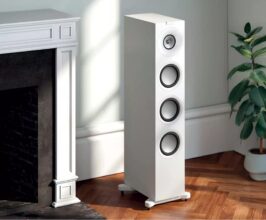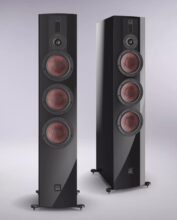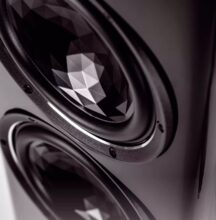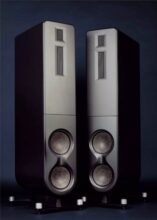Dali Epikore 11 Review
After the Kore, we had the pleasure of welcoming the freshly minted successor from the Danish tradition-rich manufacturer, the Dali Epikore 11 into our listening room. Tested at nearly 40,000 euros a pair.
by Artur Evers
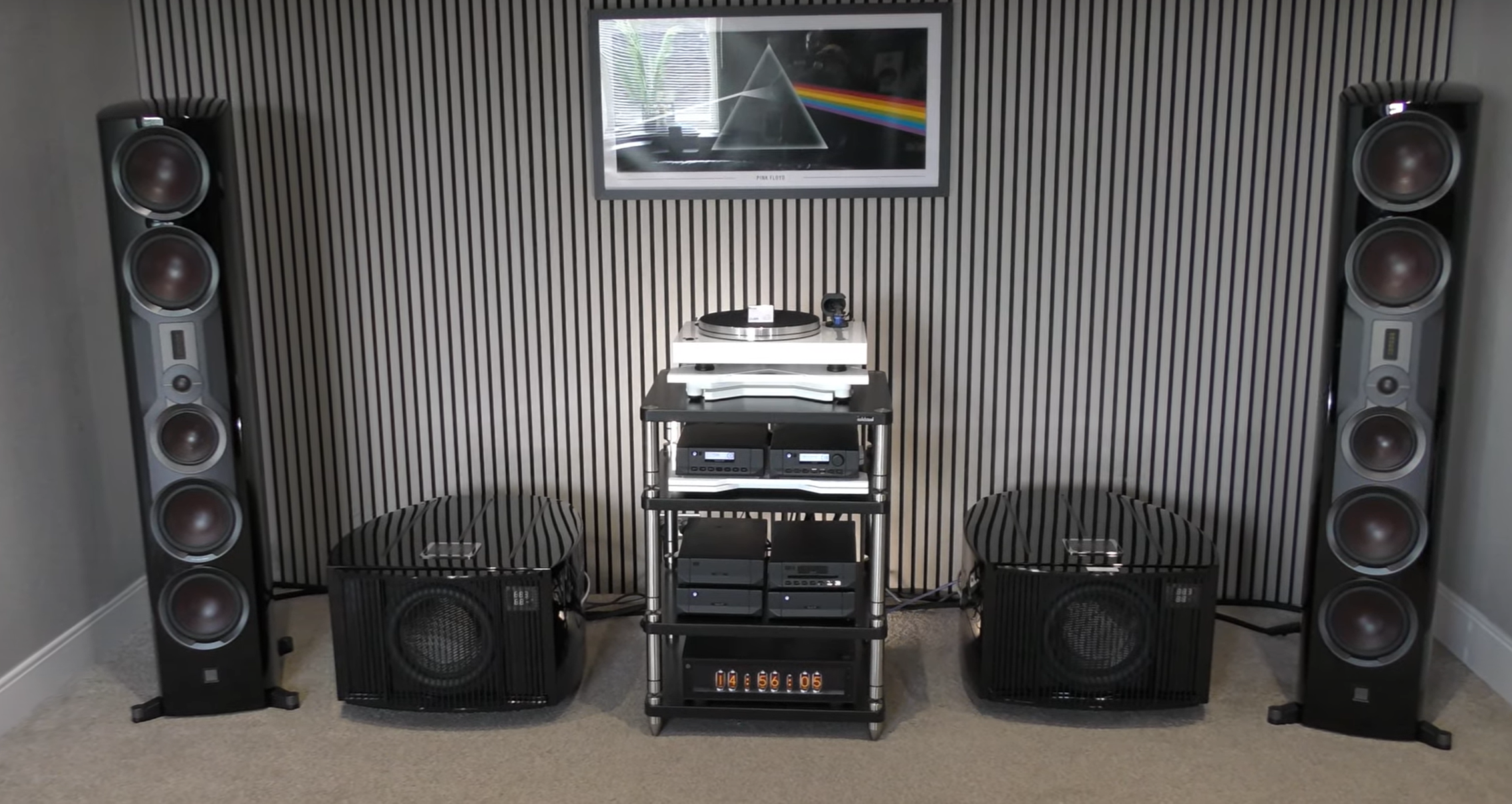
Two years ago, our editorial colleague Patrice Lipeb followed Dali’s invitation to their main factory in Norager, Denmark, to get a firsthand look at the renowned manufacturer’s production site. He was surprised to find that the majority of the product range was being crafted by the 120 employees on-site. Representatives of the Opticon and Epicon series are carefully assembled and fine-tuned here, step by step, by hand. The Danes also operate a factory in China, where the 140 employees there handle the assembly of components like magnet systems and crossovers.
The main star of the Danish factory tour was, of course, the massive high-end floor-standing speaker Dali Kore. After Dali’s CEO Lars Worre invited us to its world premiere at the HIGH END show in Munich in 2022, we couldn’t wait to get our hands on this magnificent piece.
Soon, we welcomed Mike Besser from Dali Germany to our listening room and had the pleasure of an intimate tête-à-tête with the Danish flagship. After an extensive test session, the editorial team couldn’t help but declare the premium speaker as belonging to the reference class.
Building on Success
A year after the world premiere of the Kore, Dali introduced the new Epikore 11 at the Munich HIGH END 2023—right in time for the company’s 40th anniversary. This 4½-way floor-standing speaker is now poised to combine the proven virtues of the Dali evergreen collection Epicon with the genius of the new “Danish Queen” Kore in one enclosure. Hence the name “Epikore” that this new model carries.
In terms of price, the Epikore 11, with a pair price of nearly 40,000 euros, is positioned between the Kore (pair price: around 90,000 euros) and the Epicon 8 (pair price: around 20,000 euros). We’ll explore later where exactly the interfaces lie where Epicon and Kore merge in the Epikore 11.
Etymology
First, let’s explore what the names of Dali’s two new flagship speakers actually mean. The ancient Greek word “Kore” has a rather interesting meaning. It refers to the (eternal) maiden, a figure in Greek mythology such as Persephone. The daughter of Zeus, the king of the gods, and his sister Demeter, the goddess of the fruitful harvest, was, according to myth, abducted by Hades, the god of the underworld, while she was picking a narcissus.
She was taken to the underworld to rule over the realm of the dead by his side. In response, Demeter, enraged over the loss of her daughter, denied humans the fertile soil, resulting in hunger and misery among mortals. After a decree from Zeus, Hades released his wife. Persephone was to return to the underworld only for a quarter of the year. During this time, the strict Demeter withheld the fertile harvests, which was how winter was explained in ancient Greece.
Today, the word “Kore” refers to a particular type of ancient Greek sculpture, primarily marble statues of young women and girls. Furthermore, the Greek prefix “Epi-” can be translated as “upon,” “at,” or “after.” Thus, the name of our test model, Epikore, offers an intriguing, ambiguous interpretive space. On the one hand, it already carries a certain supernatural nobility in its name. On the other hand, it references the almost superhuman craftsmanship required to carve graceful figures from massive material. This is quite promising for a speaker like the Epikore 11, which we carefully unpacked and set up in our listening room.
Danish Princess
After we, not without a bit of sweat (each speaker weighs 75 kilograms), attached the feet and set up both Epikore 11 test models, we could finally take a calm look at this truly majestic speaker, which stands almost as impressively as the Kore. The elegantly curved, sculptural enclosure in a refined walnut finish reaches a height of one meter sixty. The design language of the speaker strongly resembles that of the Epicon 8. The multi-layered piano lacquer finish is also available from Dali in a reddish chestnut look and timeless black. The fact that the body of the Epikore 11 does not have parallel walls on any side is not just for aesthetic reasons.
This design prevents standing waves from forming inside the enclosure. Vertically centered on the rounded back of the enclosure, we find two bass reflex ports that allow the woofers, mounted above and below the tweeter and midrange driver on the front, to breathe. No fewer than four drivers are assigned to the Epikore 11 for the bass!
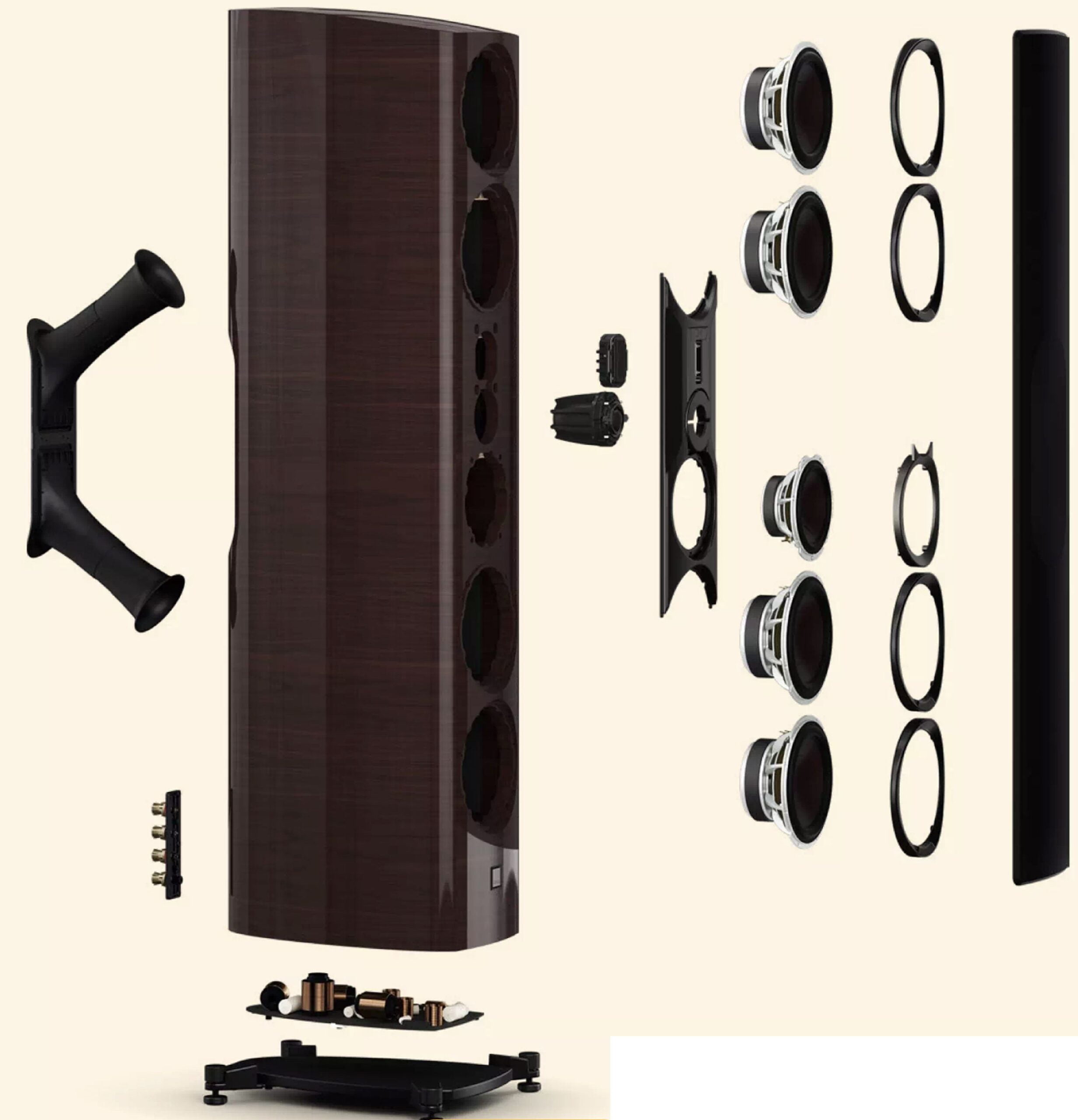
Both pairs are housed in a dedicated 64-liter enclosure and operate with 8-inch diaphragms made of a special paper and wood fiber composite. This material choice is familiar to us from the Epicon series and is a hallmark of Dali. However, the material has been extensively revised for the Epikore. The construction of the driver basket has also been further refined. The whole system is driven by a massive ferrite magnet.
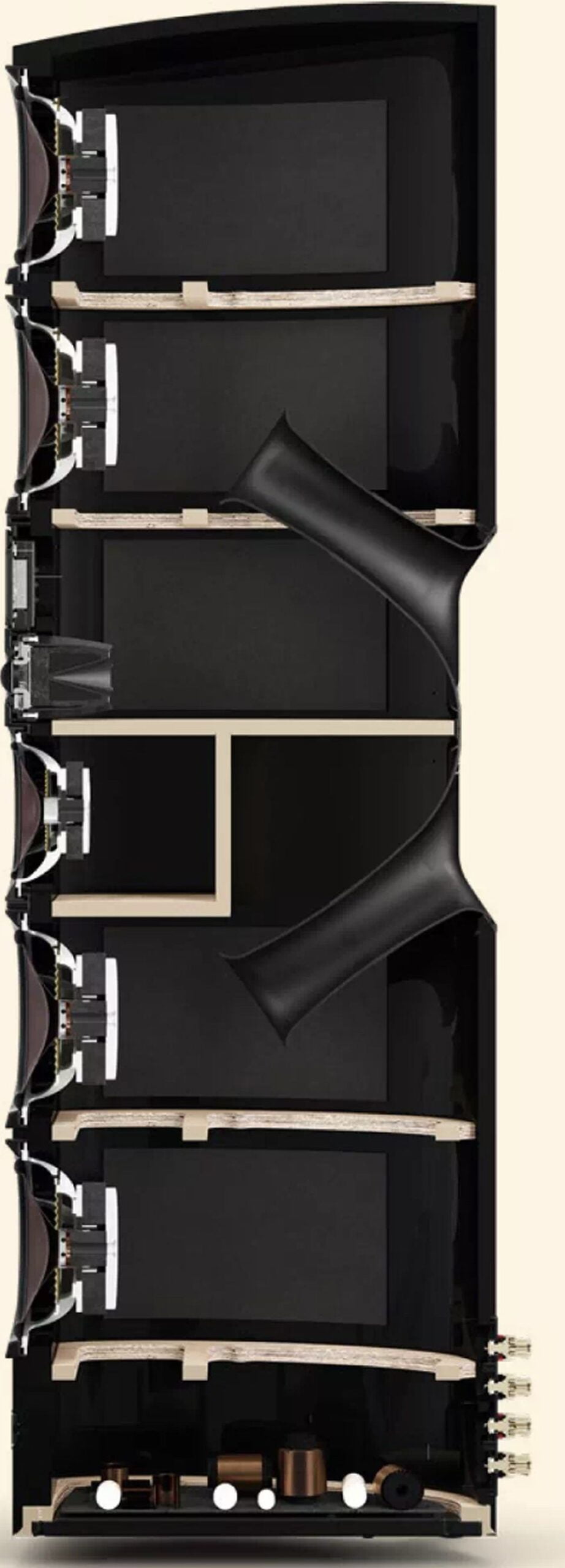
Top-notch Technology
The same applies to the 6.5-inch midrange driver. The ferrite ring itself is capped with steel. Moreover, Dali’s in-house material composition SMC (Soft Magnetic Compound) of the second generation is also used in the Epikore 11. This magnetic granulate can be molded into any desired shape and, according to the manufacturer, promises minimized distortion and further improved dynamics. SMC Gen-2 is used in its final form as a magnetized fluid in the woofers and midrange drivers, as well as in the coils and their crossover.

The crossover splits the incoming signal into four and a half ways. Thus, the two upper woofers handle the range between 29 Hertz and 170 Hz, while the lower pair plays up to 370 Hz. The midrange driver, which already starts taking over here, finally passes the work on to the EVO-K tweeter at 3.1 kHz. We already know this tweeter from an earlier version in the Epicon series, and it is equipped with two drivers. A 35-millimeter (mm) soft dome tweeter plays up to 12 kHz. At 10 kHz, the high-pass filter of the magnetostatic tweeter, which Dali uses as an additional tweeter, begins to operate.

What is particularly noteworthy in the operation of the EVO-K tweeter is a simple copper cap. This cap measurably reduces distortions between 2 and 20 kHz by a factor of 10—an impressive achievement. Overall, the EVO-K tweeter can play up to 34 kHz.

As we already suspected after testing the flagship model Kore, the Dali Epikore 11 is not exactly modest in its choice of amplifier. Indeed, the manufacturer recommends at least 40 watts and sets an upper limit of an astronomical 1,000 watts, aiming to set a benchmark.
Power, Power, Power
It is therefore advisable to rely on bi-amping, though we did not go that far—and we didn’t have to. With Musical Fidelity’s M8xi stereo integrated amplifier, we had a whopping 520 watts per channel at our disposal. That should be more than sufficient for our listening room, which measures just under 40 square meters. To complete our setup with matching quality, we also used Musical Fidelity’s brand-new M8xTT turntable.
In a test of this caliber, the album “Random Access Memories” by Daft Punk cannot be played often enough. The very first track, “Give Life Back to Music,” is a promise, a spark, pure musical enjoyment. The Epikore 11, which thankfully arrived in our listening room already broken in, immediately caught fire (metaphorically speaking) and quickly filled half the building with sound. The four woofers deliver such an incredibly clear and defined punch that you typically only experience in a nightclub.
Meanwhile, the individual sound groups, like guitar, piano, and vocoder, are so clearly defined and precisely positioned in the entire soundstage that you almost feel compelled to get up and walk around the band. Throughout, the Dali Epikore 11 plays not only with tremendous power but also with a refined touch, as demonstrated with “Laughing Stock.” The last studio album by Talk Talk begins with the hum of an amp before an open guitar chord is joined by strings, bass, and drums. A masterfully produced sound. Concentrated restraint with extreme tension.
When Mark Hollis finally begins singing, the Epikore 11 projects a micro-dynamically sensitive and harmonically rich image into the room, as only very few speakers can. Every single timbre is brutally precise. Simply fantastic. The track “After the Flood” begins with an elegiac piano motif that shimmers from the farthest corner of the room. Gradually, Hammond, guitar, bass, and drums join in. A crescendo of a special kind, which Dali’s new premium speaker captures brilliantly.
Specifications
FEATURES
• 4½-way floor-standing speaker
• 4 x 8-inch paper/wood fiber composite woofer
• 1 x 6.5-inch paper/wood fiber composite midrange driver
• 35 mm soft dome tweeter, magnetostatic additional tweeter
• Dimensions: 163 x 34 x 57 cm (HxWxD)
• Weight: 75 kg per speaker
• High-quality connection terminal with two pairs of connectors
SOUND
Transparency: 100
Resolution: 100
Bass quality: 100
Bass depth: 100
Spatiality: 100
Dynamics: 100
Overall: 100
Price/Performance: Very Good
Features and Evaluation of the Dali Epikore 11
General:
- Device Class: Floor-standing speaker
- Price Category: Luxury class
- Manufacturer: Dali
- Model: Epikore 11
- Price (RRP): 40,000 Euros (pair)
- Dimensions (W/H/D): 42.2 x 160 x 55.4 cm
- Weight: 75.6 kg
- Information: www.dali-speakers.com
Technical Data (according to manufacturer):
- Design: 4½-way
- Frequency Response: 29 Hz – 34 kHz
- Power Handling: <1000 W
- Room Recommendation: 30 – 80 m²
- Custom Sound Settings: None
- Inputs: Bi-Amping, Bi-Wiring
Evaluation:
- Bass Reproduction: 9/10
- Midrange Reproduction: 10/10
- Treble Reproduction: 10/10
- Spatiality: 10/10
- Sound Quality: 9.8/10
- Features/Build Quality: 10/10
- User-Friendliness: 7/10
- Adjustments: None
- Intermediate Score: 9.6/10
- Price/Performance: 9/10
- Overall Score: Reference Class (9.5/10)
Verdict
The Epikore 11 is a truly worthy successor to the Kore, which we once crowned the Danish Queen. Everything about the Epikore 11 is just right: design, components, tuning, and performance. Of course, 40,000 euros is not an amount to be pulled out of thin air. But this is likely to be a real investment that will bring you joy for a lifetime.
DALI EPIKORE 11 | 40 Years of Loudspeaker Exellence
Forty years ago, DALI embarked on a pioneering journey, driven to deliver an unparalleled auditory experience. With four ...



